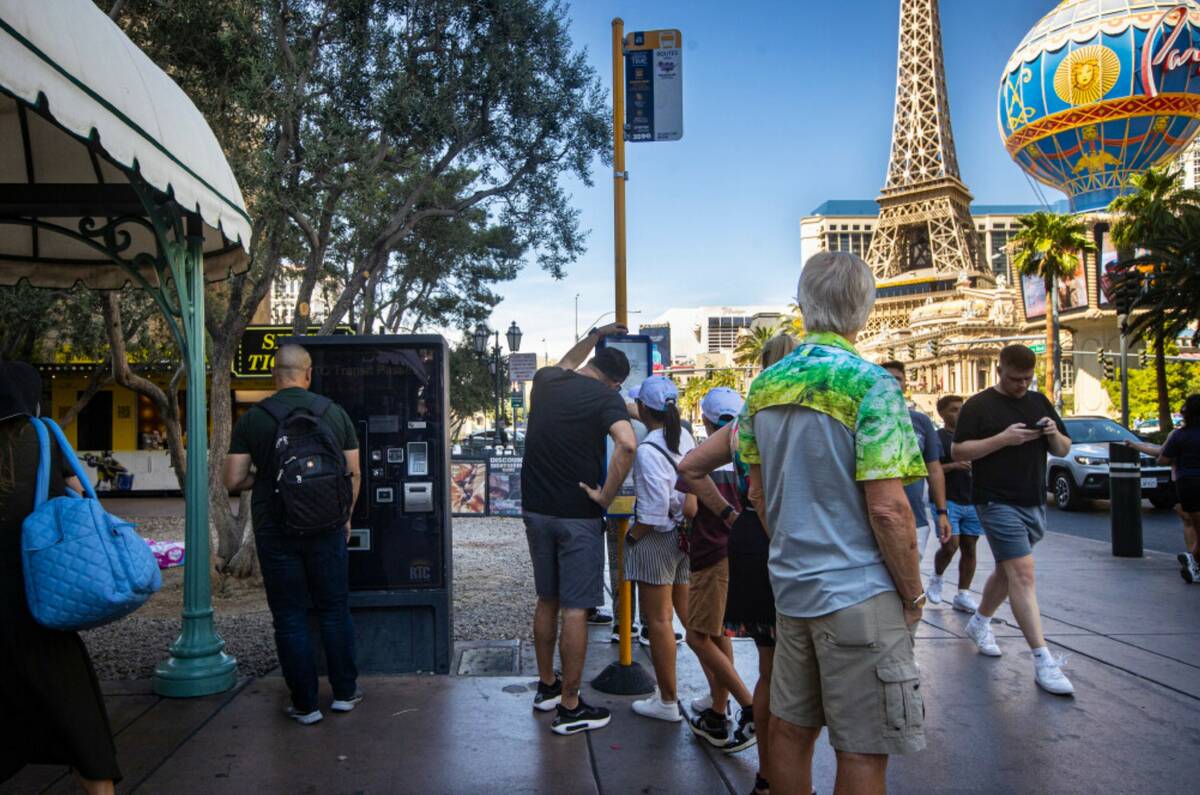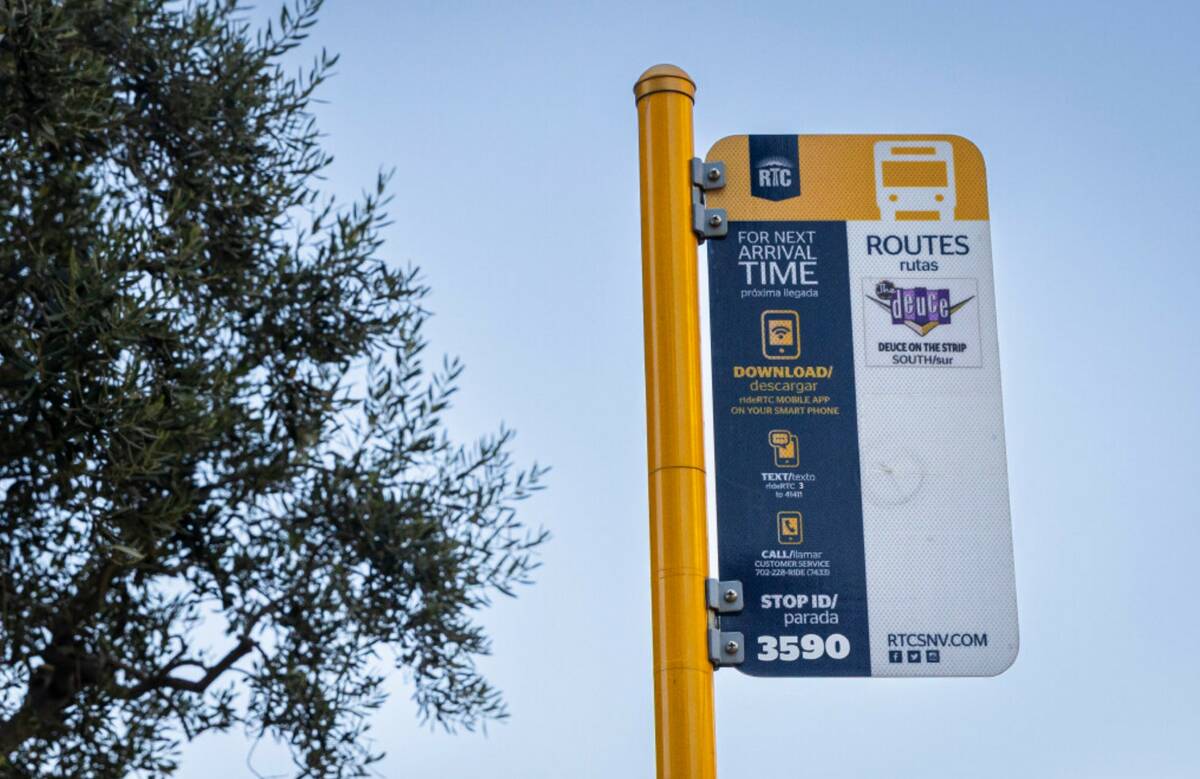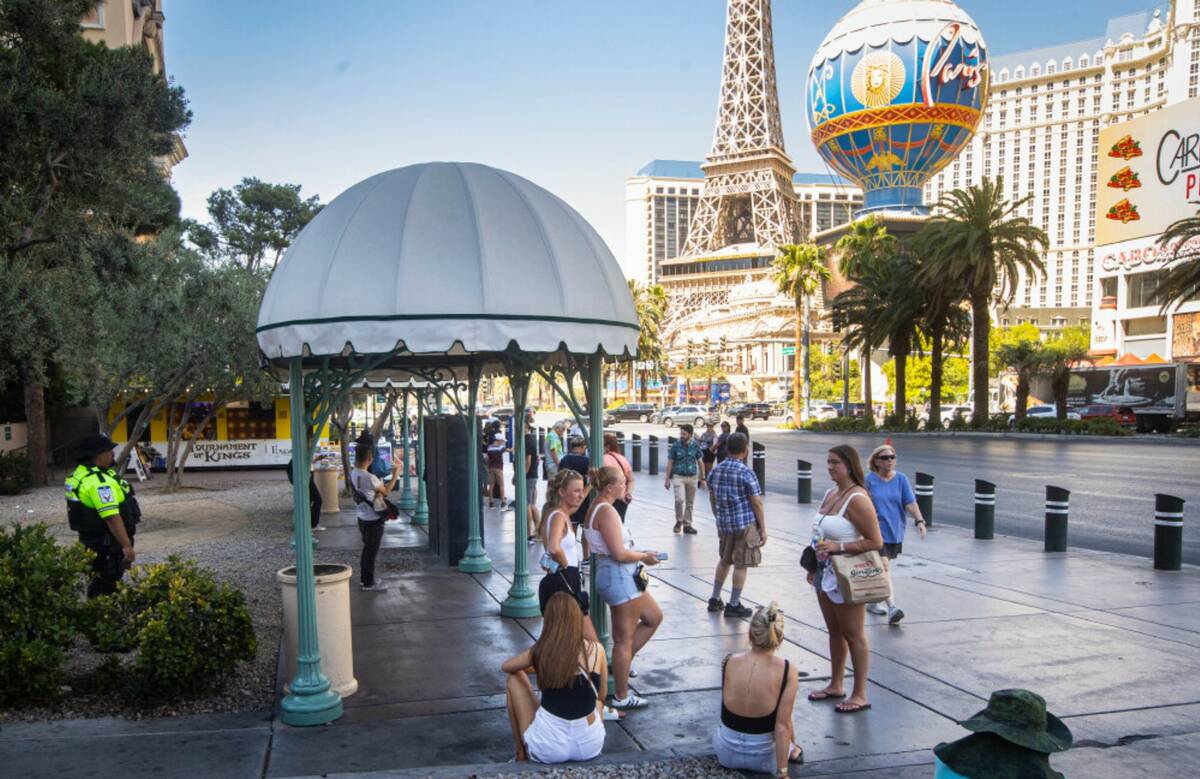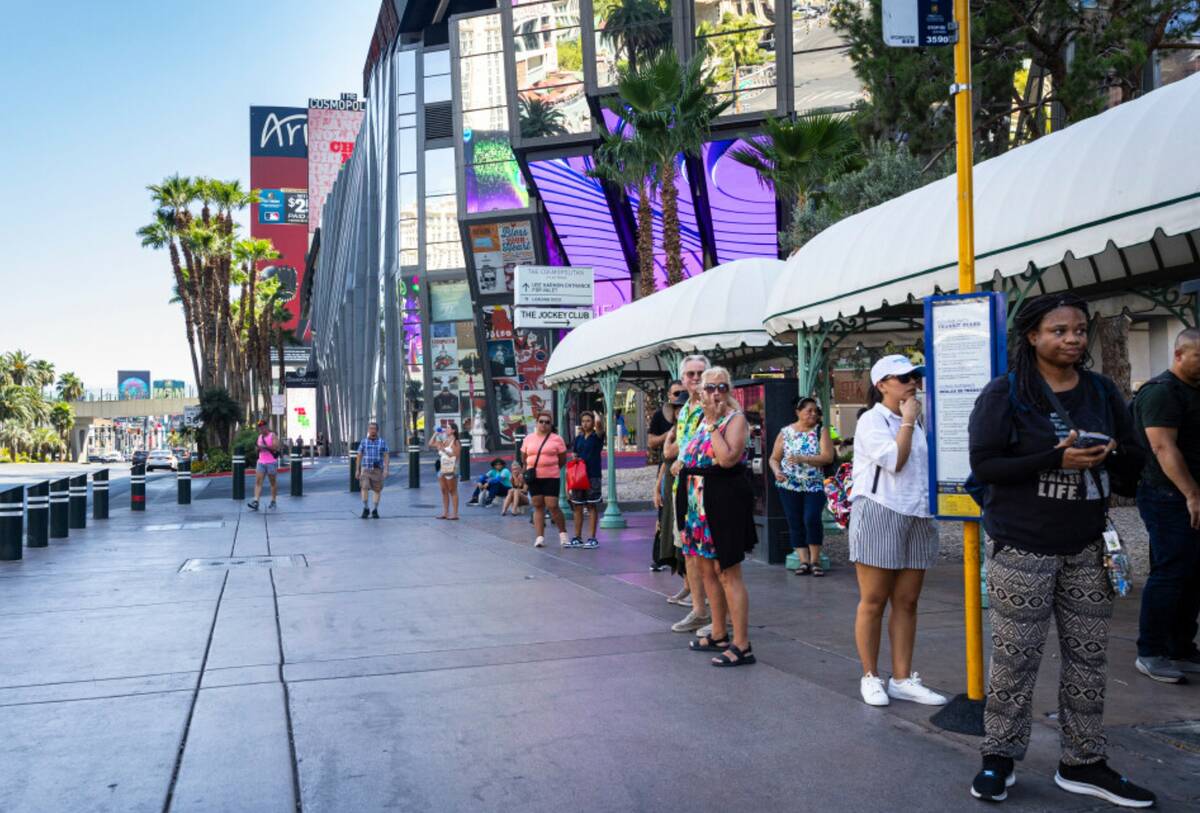‘No care for us feeling sick’: Las Vegas company cited under new Nevada heat rule
Weighed down by their bulletproof vests, employees of a security company were less than thrilled with a lack of shade, water and needed breaks on the Strip. That’s why one of them called the state.
“There’s no care for us feeling sick, overheated,” an unnamed employee wrote in a complaint, adding that workers aren’t provided with enough water, are discouraged from seeking shade from trees and that no heat training had been offered. “This has been an ongoing issue since last summer. I’m just speaking up because last summer we actually had a lot of people pass out due to the heat, and (we had a) medical emergency last summer.”
Three other employees of Inter-Con Security Systems Inc. whom the Nevada Occupational Safety and Health Administration interviewed shared similar concerns about working the bus stops outside of Paris Las Vegas and the Bellagio on hot days.
Since a new extreme heat regulation took effect at the end of April, Nevada OSHA has cited two businesses for a lack of proper paperwork, according to investigation reports and employee interviews obtained by the Las Vegas Review-Journal.
While investigators were looking into a lack of fall protection and safety glasses, they found that the other cited business, B&R Auto Wrecking, did not complete a one-time job hazard analysis for its facility near Carson City that the heat regulation requires.
The documents offer a window into how Nevada’s untested worker protections, currently being floated as an industry-backed answer to a federal rulemaking process for worker heat protections, are playing out in practice in the first summer of enforcement.
“OSHA is actively enforcing the new heat illness regulation, and it is important for employers to have the required plan in effect to help protect their employees from potential occupational exposure to heat illness,” said Teri Williams, a spokeswoman for the Nevada Department of Business and Industry that includes OSHA, in a statement.
Heat regulation requires hazard analysis
Inter-Con Security Systems is a security firm that partners with the Regional Transportation Commission to guard the region’s bus system. B&R Auto Wrecking claims to be the nation’s largest independent auto recycler, with locations in Nevada, Washington, California and Oregon.
Both of the businesses had heat safety plans but had not completed a job hazard analysis, according to internal violation reports.
Only Inter-Con Security Systems was recommended for a fine, totaling $11,823, though it hasn’t yet paid the fine and has corrected the issues found in the inspection, Williams said.
Details of what corrective action looks like are sparse, but Williams said companies have the option to request an informal meeting with regulators to address worker concerns, contest the the citations or pay the penalties in full.
In a statement, Inter-Con Vice President Orit Harrington affirmed that the company was cooperating with the OSHA investigation and noted that it remains “focused on workplace safety and the safety of workers who perform their jobs in the heat.”
B&R Auto Wrecking’s human resources director, Erin Hart, who communicated with OSHA during its investigation of the company, did not respond to requests for comment.
No review before investigation
To some, the sole requirement of having an enforceable heat safety plan on file and conducting a one-time job hazard analysis isn’t nearly enough to keep workers safe on broiling days.
Previously, OSHA considered a more stringent regulation that would have triggered required actions like mandatory breaks when temperatures were above a certain threshold. That idea was met with opposition from state business leaders, who felt such a threshold could not be implemented fairly across different sectors.
The safety plan businesses must have on file, according to the regulation, must address access to potable water, a rest break for someone showing signs of heat illness, cooling measures for employees, related training and procedures for an emergency.
However, OSHA does not review heat plans or job hazard analyses unless employee complaints prompt an investigation. The agency’s Safety Consultation and Training Section offers consultation services to businesses that may need help complying with the regulation.
Jackie Spicer, coordinator of the Nevada Environmental Justice Coalition advocacy group, said she was disillusioned by pushback from the state’s business community during the multiyear rulemaking process for the regulation.
Spicer, who found OSHA to be too politically neutral in the process, said her organization stopped engaging with rulemaking sessions. In Spicer’s view, Nevada’s implemented rule lacks teeth to guarantee protection for employees, though she said some protection is better than none.
“If nothing else, this is a tool that the public can and should use if they feel comfortable,” Spicer said. “We need to encourage people to report their employers if they are not responding to heat risk.”
Williams, of the Nevada Department of Business and Industry, called the rule “performance based,” meaning that it doesn’t put forth a one-size-fits-all method of ensuring workers are protected. The regulation just focuses on results.
“This allows employers the flexibility to determine the most effective methods for their workplace to meet the safety standards,” she said. “Employers are accountable for ensuring that the protections they have put in place are adequate to protect workers from the hazard and for ensuring the plan is implemented with fidelity.”
Contact Alan Halaly at ahalaly@reviewjournal.com. Follow @AlanHalaly on X.























